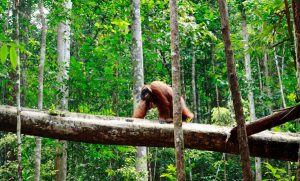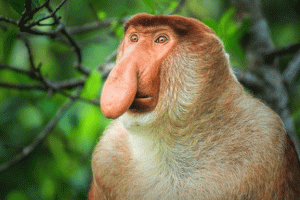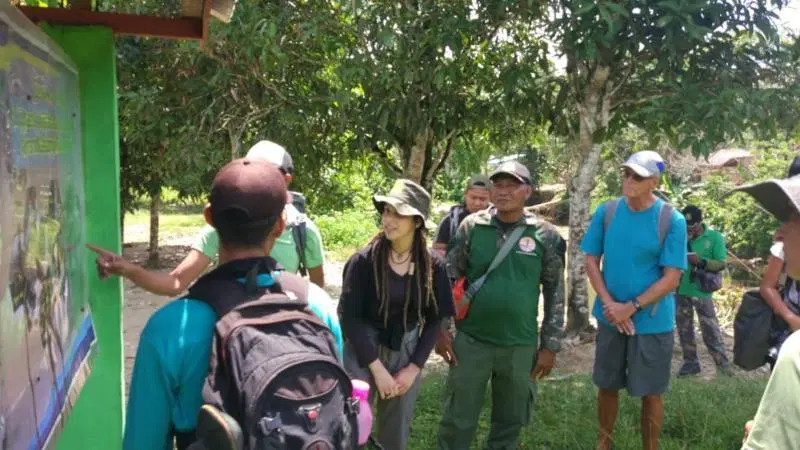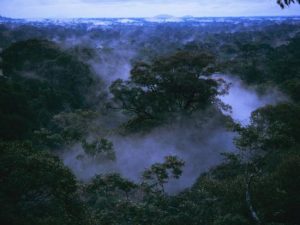Indonesia is blessed not only with unique and diversed culture, but also beautiful and vast nature. The forest area in Indonesia is even the third largest one in the world. This surely means that Indonesia has diversed species of flora and fauna on its 82 hectare forest area.
The data from 2018 states that Indonesia is home to over 25,000 species of flora which includes the 10% species on Earth. Further, Indonesia has over 500 species of mammals, 4,000 species of pisces, 1,600 species of aves, 1,000 species of reptiles, and more than 200,000 species of insects.
Indonesia even has a total of 202 endemic species, with 59 of them scattered in Kalimantan regions. Kalimantan is a giant, rugged island of Indonesia. It is known for its biodiverse rainforest where orangutans and other wildlife animals are preserved.
The biodiversity makes the rainforest area of Kalimantan is highly preserved by the government of Indonesia as national parks. One of the national parks in Kalimantan Island that you need to know is Gunung Palung National Park in West Kalimantan. It is regarded as one of the best national parks in Indonesia.
About Mount Palung National Park

Gunung Palung National Park (GPNP) is located between the area of North Kayong Regency and Ketapang Regency, West Kalimantan. It stretches on 108,000 hectare protected area which includes the area in and around the Gunung Palung and Gunung Panti mountains.
It is granted the title as the most complete national park in Indonesia. It has seven different ecosystems which represent every habitats in Kalimantan rainforest.
GPNP is home to over 2,500 orangutans (Pongo pygmaeus wurmbii), which is the 14% remaining wild population of the subspecies. Exploring Gunung Palung National Park will surely be an amazing moment in your life.
History
In 1937, the area was only around 300 km2 which was then tripled to be 900 km2 in 1981. In 1990, the area was preserved as national park and in 2004 it stretches over 108,000 hectare. The area includes North Matan Hilir, Sukadana, Simpang Hilir, Nanga Tayap, and Sandai Sub-Districts.
Since 2003, the villagers in the area of GPNP has been working hand in hand to preserve the biodiversity of the national park. A conservation for the orangutans was also built. The conservation organization is called as OPMU, which stands for Orangutan Protection and Monitoring Units.
How to arrive there
In order to arrive at the national park, you will need to travel to Pontianak, the capital city of West Kalimantan. Then, you need to fly again to Ketapang for about 30 minutes.
From Ketapang, you need to go to Melano Bay with minibus for about 2 hours. Then, you are heading to the national park with a long boat for about 6 hours.
Well, it is such a long journey to arrive at this magnificent nature preservation. But of course, the more effort you need to pay, the more meaningful and worthy it will be. If you feel so tired when you arrive in Ketapang, you can take a moment to enjoy the tourist attractions in Ketapang.
Things to do there
As the most complete national park in Indonesia with more than 65% protected area from human activity, there are many things that you can find and see in this GPNP.
With the unique ecosystems, you can find any kind of flora and fauna that you might not be able to see on the other entire places. Try the things below to give you further insights of the things that you can do in GPNP.
1. Witness the diversed ecosystems

As mentioned before, GPNP has diversed ecosystems of 7 different ecosystems in one area. You can find mangrove forest, freshwater swamp forest, swamp forest, peat forest, tropical rainforest, mountain forest, and rheofite vegetation. The mountain forest is the highest ecosystem of the area as it is located on Mount Palung. It is about 1,116 meters above sea level.
The area of the national park is also the center of river flows on the south and west coast of Kalimantan Island. The river flows center are Tulak River Basin, Pawan River Basin, and Simpang River Basin.
GPNP is a national park with a truly diversed ecosystems. Visit this site and witness by yourself how the diversity of Indonesia’s nature is represented in one place.
2. Visit the habitat of over 2,500 orangutans

As stated before, GPNP is the home to 2,500 orangutans that live on the lowland forest, mountain forest, and the peat swamp forest. Instead of visiting the zoos in Indonesia to interact with orangutans, it’s better for you to visit their real habitat in this national park.
You can take a tour on the Gunung Palung National Park and have a local guide explaining to you about the orangutans habitats. The staff from the orangutans conservation organization will also be there to help you.
You can see for yourself how the orangutans behave, how they eat, and how they play with each other. Their big innocent eyes will attract you the most. You will fall in love to them.
3. Meet bekantan

Another endemic species that you can find in the national park is bekantan. Bekantan is a monkey with unusual large nose, a long tail, and a reddish-brown skin color. It is the endemic species of Kalimantan and can be found in the mangrove forest.
Visiting this national park will grant you the opportunity to meet this endemic species. You will see how this monkey differs from the common monkeys as well as witness how they behave and play with each other.
4. Immerse with the mother nature

Besides the vast species of fauna, there are also more than 450 species of flora preserved in this national park. You can find woody plants like dipterocarpus, koomasia, and shorea. There are also many types of moss-lichens. efifit, and ferms.
The trees in this national park can grow over 60 meters tall. Constant grows happen in this area as tree will naturally sprout, grow, develop, then die or fall down alternately.
By visiting this site, you will have the time to immerse yourself with the mother nature as well as revive the nature spirit inside you. Breathe the refreshing air in the forest and grow together with the wild trees.
5. Visit ecotourism village of Lubuk Banji

In 2013, ecotourism concept was established in Sedahan, a village at the foot of Palung Mountain. Lubuk Banji is an area in the Sedahan village. The villagers can work as your guide when you are exploring the national park. A tourism package is also available in the village.
You can see the habitat of orangutans near the village. In the afternoon, you will be invited to join a lunch with the locals. After that, you are guided to explore the village and the rice field with the background of Palung Mountain. You can aslo see the process of making palm sugar. It is a complete exploration of culture, social, and natural aspects in one place.
6. Converse at night with the local in the middle of the forest

If spending a day on exploring the beauty of this national park is not enough for you, then you can spend a night in the forest by staying at the villagers’ homestay.
If you are not over the diversed nature of the national park yet, then you can have a conversation with the locals as the owner of the homestay.
Conversing at night with the local people with the background of the night nature song will surely give you a magical experience.
Besides GPNP, there are also other national parks that are scattered on all regions of Indonesia. There are national parks in Sumatra, national parks in Bali and Nusa Tenggara, and national parks in maluku and Papua. Make sure you make some time to visit all these national park and see the real biodiversity of Indonesia.
